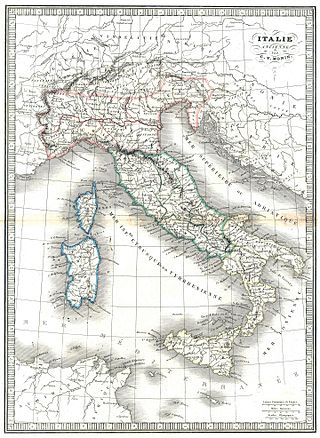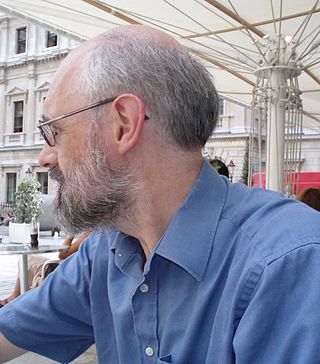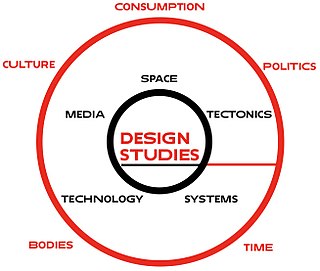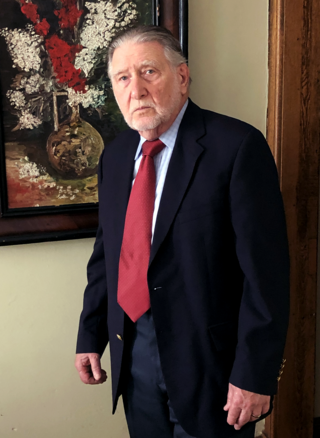Related Research Articles

Fascism is a far-right, authoritarian, and ultranationalist political ideology and movement, characterized by a dictatorial leader, centralized autocracy, militarism, forcible suppression of opposition, belief in a natural social hierarchy, subordination of individual interests for the perceived good of the nation or race, and strong regimentation of society and the economy. Opposed to anarchism, democracy, pluralism, egalitarianism, liberalism, socialism, and Marxism, fascism is placed on the far right-wing within the traditional left–right spectrum.

A tramp is a long-term homeless person who travels from place to place as a vagrant, traditionally walking all year round.

Ethnography is a branch of anthropology and the systematic study of individual cultures. Ethnography explores cultural phenomena from the point of view of the subject of the study. Ethnography is also a type of social research that involves examining the behavior of the participants in a given social situation and understanding the group members' own interpretation of such behavior.

Visual anthropology is a subfield of social anthropology that is concerned, in part, with the study and production of ethnographic photography, film and, since the mid-1990s, new media. More recently it has been used by historians of science and visual culture. Although sometimes wrongly conflated with ethnographic film, visual anthropology encompasses much more, including the anthropological study of all visual representations such as dance and other kinds of performance, museums and archiving, all visual arts, and the production and reception of mass media. Histories and analyses of representations from many cultures are part of visual anthropology: research topics include sandpaintings, tattoos, sculptures and reliefs, cave paintings, scrimshaw, jewelry, hieroglyphics, paintings and photographs. Also within the province of the subfield are studies of human vision, properties of media, the relationship of visual form and function, and applied, collaborative uses of visual representations.

Visual sociology is an area of sociology concerned with the visual dimensions of social life.

Timothy Asch was an American anthropologist, photographer, and ethnographic filmmaker. Along with John Marshall and Robert Gardner, Asch played an important role in the development of visual anthropology. He is particularly known for his film The Ax Fight and his role with the USC Center for Visual Anthropology.
Jay Ruby was an American scholar who was a professor in the Department of Anthropology at Temple University until his retirement in 2003. He received his B.A. in History (1960) and Ph.D. in Anthropology (1969) from the University of California, Los Angeles.
The USC Center for Visual Anthropology (CVA) is a center located at the University of Southern California. It is dedicated to the field of visual anthropology, incorporating visual modes of expression in the academic discipline of anthropology. It does so in conjunction with faculty in the anthropology department through five types of activities: training, research and analysis of visual culture, production of visual projects, archiving and collecting, and the sponsorship of conferences and film festivals. It offers a B.A. and an MVA in Visual Anthropology.

Italian fascism, also classical fascism and Fascism, is the original fascist ideology, which Giovanni Gentile and Benito Mussolini developed in Italy. The ideology of Italian Fascism is associated with a series of political parties led by Mussolini: the National Fascist Party (PNF), which governed the Kingdom of Italy from 1922 until 1943, and the Republican Fascist Party (PFR), which governed the Italian Social Republic from 1943 to 1945. Italian fascism also is associated with the post–war Italian Social Movement (MSI) and later Italian neo-fascist political organisations.

Alfredo Rocco was an Italian politician and jurist. He was Professor of Commercial Law at the University of Urbino (1899–1902) and in Macerata (1902–1905), then Professor of Civil Procedure in Parma, of Business Law in Padua, and later of Economic Legislation at La Sapienza University of Rome, of which he was rector from 1932 to 1935.

France Winddance Twine is a Black and Native American sociologist, ethnographer, visual artist, and documentary filmmaker. Twine has conducted field research in Brazil, the UK, and the United States on race, racism, and anti-racism. She has published 11 books and more than 100 articles, review essays, and books on these topics.

An ethnographic film is a non-fiction film, often similar to a documentary film, historically shot by Western filmmakers and dealing with non-Western people, and sometimes associated with anthropology. Definitions of the term are not definitive. Some academics claim it is more documentary, less anthropology, while others think it rests somewhere between the fields of anthropology and documentary films.

John Collier Jr. was an American anthropologist and an early leader in the fields of visual anthropology and applied anthropology. His emphasis on analysis and use of still photographs in ethnography led him to significant contributions in other subfields of anthropology, especially the applied anthropology of education. His book, Visual Anthropology: Photography as a Research Method (1967) is one of the earliest textbooks in the field. His photographs are archived at the Maxwell Museum of Anthropology at the University of New Mexico in Albuquerque.
Jason Hughes is a British professor of Sociology at University of Leicester, elected Fellow of the Academy of Social Science, appointed Member of the Academy of Europe, and a senior fellow of the Higher Education Academy. Previously, he was a senior lecturer at Brunel University of London.

Corporatism is a political system of interest representation and policymaking whereby corporate groups, such as agricultural, labour, military, business, scientific, or guild associations, come together on and negotiate contracts or policy on the basis of their common interests. The term is derived from the Latin corpus, or "body".
Luc Maria Alfons Pauwels is a Belgian visual sociologist and communication scientist, Professor of Communication Studies at the University of Antwerp, Belgium, and director of its Visual and Digital Cultures Research Center (ViDi). He is known for his work on visual research methods.
John Marshall Grady is an American sociologist and emeritus professor of sociology at Wheaton College, known for his seminal work in the field of visual sociology.

Martyn Hammersley is a British sociologist whose main publications cover social research methodology and philosophical issues in the social sciences.

Design studies can refer to any design-oriented studies but is more formally an academic discipline or field of study that pursues, through both theoretical and practical modes of inquiry, a critical understanding of design practice and its effects in society.

Jerome Krase is a professor emeritus of sociology at the Murray Koppelman School of Business and professor at School of Humanities and Social sciences at Brooklyn College. He was also president of the European Academy of Sciences of Ukraine.
References
- ↑ Mary Strong; Laena Wilder (May 1, 2009). Viewpoints: Visual Anthropologists at Work. University of Texas Press. pp. 38–. ISBN 978-0-292-70671-2.
- ↑ "Rev. Joseph A. Lauritis, C.S.Sp. Endowed Chair in Teaching with Technology | Make a Gift | Duquesne University". Archived from the original on April 2, 2015. Retrieved January 22, 2015.
- ↑ Becker, Howard S. (November 1, 2007). Telling About Society. University of Chicago Press. p. 199. ISBN 978-0-226-04126-1.
- ↑ Kornblum, William (January 31, 2011). Sociology in a Changing World. Cengage Learning. p. 30. ISBN 978-1-111-30157-6.
- ↑ Kolb, Bettina (January 31, 2012). "Unveiling Space by Using Participatory Photo Interview". In Silva, Carlos Nunes (ed.). Online Research Methods in Urban and Planning Studies: Design and Outcomes. IGI Global. pp. 120–137. ISBN 978-1-4666-0075-1.
- ↑ "Doug Harper: IVSA President". International Visual Studies Association. Retrieved March 18, 2015.
- ↑ Harper, Douglas (2012). Book Review : Douglas Harper, Visual Sociology. New York: Routledge, 2012, 294 pp. Routledge. ISBN 978-0-415-77896-1 . Retrieved November 25, 2016– via Ejournals.library.ualberta.ca.
- ↑ "Good Company. Douglas Harper (Book)". Connection.ebscohost.com. January 3, 1982. Archived from the original on April 2, 2015. Retrieved November 25, 2016.
- ↑ "Photographic image of cover of Cape Breton 1952 : The Photographic Vision of Timothy Asch". Ethnographicspress.com. Archived from the original (JPG) on November 14, 2016. Retrieved November 13, 2016.
- ↑ "Working Knowledge: Skill and Community in a Small Shop by Douglas Harper" Peter F. Murphy The Oral History Review Vol. 16, No. 2 (Autumn, 1988), pp. 157–159, Oxford University Press